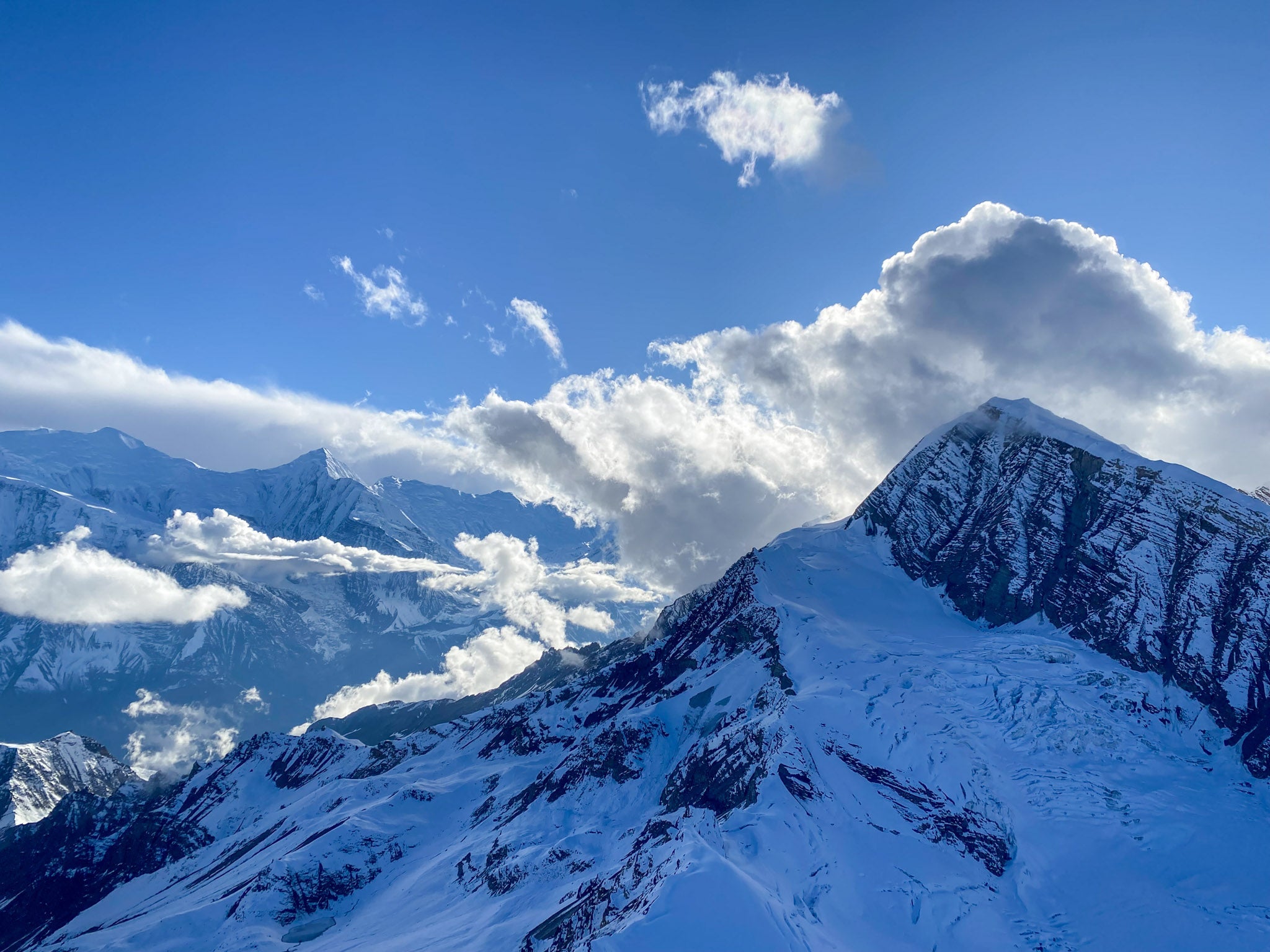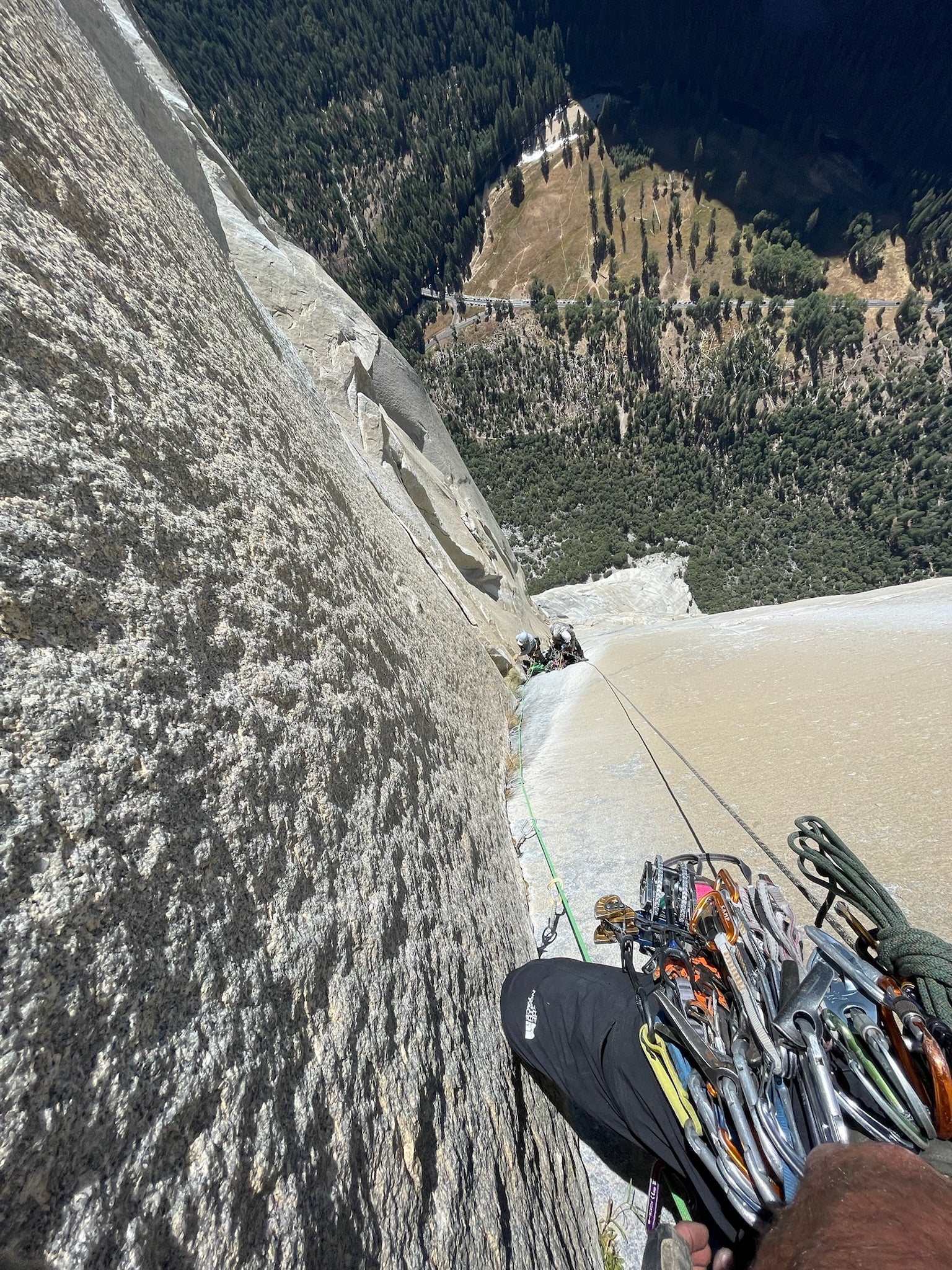
Chulu Far East- Annapurna Region

"I wanted to pursue something I wasn’t sure I could accomplish. Climbing a 6,000 meter peak in the Himalayas seemed a good fit.”
I flew into Kathmandu and met my Sherpa. We start the drive west to begin Annapurna Circuit, a hiking trail around Annapurna that leads to Chulu Far East. We started the hike, moving from village to village, staying in tea houses, moving up the valley from Dharapani, to Chame with natural hot springs, to Upper Pisang with a Buddhist temple, and arrived in Ngawal. From Ngawal, we broke off Annapurna Circuit and started towards Chulu Far East. We set up camp at the foot of the mountain (~13.6k ft). Up to that point, the weather had been almost discouragingly pleasant- sunny and 60s.I was a little disappointed the weather was so nice, almost like summer camp. I wanted the Himalayas to be the tundra I had envisioned.
The mountains must have heard me. Within 2 hours, as if on cue, the temperature dropped 30 degrees, and started snowing for most of 2 days. During the weather hold, the Sherpa voiced his concern the snow could be too deep at altitude, and summit might not be possible. The snow finally stopped and we made the push for base camp. We arrived at base camp (~16.1k ft), cleared snow and set up our tent. We planned the next day to cut trail to high camp, assess conditions and snow levels, and return to base camp for the night. We began the push to high camp- the snow was deep, and not quite cold enough for the snow to be frozen over and easily walk on the surface. Each step would punch through and drop down. We kept trading lead to break trail, it was exhausting. It was consistently mid-thigh, some areas deeper and close to the hip. At high camp, the Sherpa remained cautious, reiterating the snow may be too deep to summit, but agreed we could make an attempt.

"The exhilaration of going up the mountain with an incredible view of the Himalayas was surreal. The experience was everything I wanted it to be. Literal breathtaking views, climbing a snow covered mountain, completely off the grid, nobody else for miles"
After setting up at high camp (~17.3k ft), the view was everything I wanted it to be- it was another planet. Surrounded by mountains, nothing but snow as far as you could see, an absolute tundra. We planned to rest the next day for acclimatization, before a summit attempt the next day after. I wanted the best chance possible for an attempt, and took the rest day to break trail towards the crampon point. In some areas the snow came near the hip, I was getting discouraged the Sherpa would be right, and summit impossible. We went to sleep, planning to wake up at 1am and step off by 2am. The alarm goes off, I get up to see the clouds had rolled in, and visibility was close to zero. Concerned the odds were already against us, I started to think the trip would be a story of ‘We didn’t make summit, but was still a great trip’. I went back to sleep and woke up at 4am. The clouds had cleared, and we were ready to make our push.
As we got close to summit, the weather had a sense of humor- clouds rolled in, visibility went close to zero. When we finally reach summit (6,050m/19.9k ft), the view was comically anticlimactic. You could see maybe 10yds. We could have been standing on a snow-covered hill at sea level in heavy fog. But we had made summit. After a few minutes, knowing sunset was only 2.5hrs away, we look back down to start the descent. It was immediately apparent why more people die climbing down than during the climb up. Our tracks quickly disappeared over the seemingly roller coaster drop down. Weather was getting sketch and we had to move. We started the descent rappelling down- safer, but slower. More clouds rolled in, temperature dropped, wind picked up, visibility was still close to zero, and it was getting dark soon. The pace for the rappel could have us getting back to high camp the next morning. There was a short break in the clouds, and off in the distance below, was our lonely tent. It seemed a lifetime away, maybe literally. There was concern that if a storm rolled in and we’re still on the exposed face of the mountain during a full overnight climb down, that a serious mistake, fall or exposure would get us killed. We decided to ditch rappelling the rest of the descent, and go down the same way we came up- clipped into each other, slow and steady. We continued our descent. It got dark and head lamps come on, maintaining the same deliberate, methodical pace down. It felt like a long breath hold back to crampon point.
We finally get back to crampon point around 9pm. The relief was a weight off the shoulders- the high risk part of descent was over, all we had left was a hike down. We arrive back at high camp close to 11pm. The euphoria finally sets in- we had made summit and back down in one piece. I rip a few cigarettes, enjoying a heater hour under the stars. The feeling of conquering the mountain, figuratively and literally, and the surreal experience of it all, was incredible.
I look up- no ambient light, the surrounding mountains silhouetted against the night sky, the stars scattered across it. The red ember from the cigarette, glowing brighter at each drag, seemed to cheer me on to keep smoking. I sat a little while longer, a stupid smile on my face, enjoying the night in the Himalayas.





